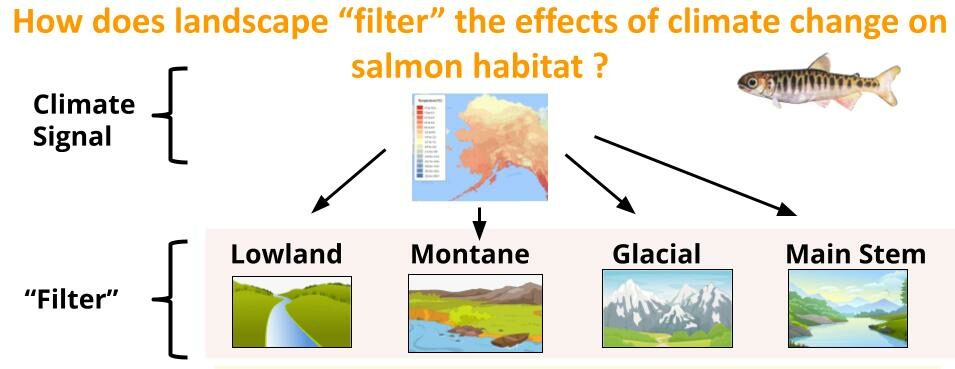A new publication authored by KWF Water Quality Coordinator Benjamin Meyer was recently published in the journal Transactions of the American Fisheries Society. Prior to being at Kenai Watershed Forum, Ben was working on his graduate research through University of Alaska Fairbanks with work focused on the Kenai River.
The research began with the broad quandry, “What could climate change mean for juvenile salmon in the Kenai River?” Through time, the question grew narrower and more detailed: since juvenile salmon live in very different habitats throughout the Kenai River, from high, rushing glacial rivers to low, meandering wetland streams, how could climate change affect these populations differently?
For two summers Ben and other researchers captured and measured thousands of juvenile salmon from Beaver Creek to Ptarmigan Creek and everywhere in between. Along with size and weight data they also collected diet contents, scales, water temperature data, and other information. The data was used to model how juvenile fish growth rates could change under future climate conditions.
So what did we learn?
The results suggest that as water temperatures warm over the next century, baby king and silver salmon fry that live in low-elevation tributaries like Beaver Creek are likely to see decreases in summer growth rates. However, for salmon with lots of food in their bellies, warmer waters may not affect their growth rate as dramatically.
Science can often leave us with more questions than answers. Here, we hope that research like this can continue to inform and guide the priorities for conservation restoration in our region.
To read this article, follow the link below. A sincere thank you to all the fellow researchers, co-workers, and community members who contributed their time, sweat, and expertise to make this research happen.



